- Home
- Robert E. Howard
The Bloody Crown of Conan
The Bloody Crown of Conan Read online
Contents
Title Page
Dedication
Publication Information
Foreword
Introduction
The People of the Black Circle
The Hour of the Dragon
A Witch Shall Be Born
Miscellanea
Untitled Synopsis (The People of the Black Circle)
The Story Thus Far...
Untitled Synopsis
Untitled Draft
Untitled Synopsis (The Hour of the Dragon)
Notes on The Hour of the Dragon
Untitled Synopsis (A Witch Shall Be Born)
Appendices
Hyborian Genesis Part II
Notes on the Conan Typescripts and the Chronology
Notes on the Original Howard Texts
Acknowledgments
Praise for Robert E. Howard
Also by Robert E. Howard
Preview for The Coming of Conan the Cimmerian
Copyright
The illustrations in this book are dedicated
to Margaret and Louis Gianni
Gary Gianni
The People of the Black Circle
first published Weird Tales, September, October and November 1934
The Hour of the Dragon
first published Weird Tales, December 1935 and January, February, March and April 1936
A Witch Shall Be Born
first published Weird Tales, December 1934
Foreword
When I was a kid, I watched a man knock down a house with a sledge hammer. It wasn’t a house exactly – a shack would be a more apt description. I can recall the afternoon vividly, the neighbourhood boys assembled in my friend Joe’s yard because his father was about to demolish an old shack which stood at the end of their property. What eight year old wouldn’t want to witness that?
When I arrived, Mr. Lill was already sizing up the job with the large sledge hammer perched over his broad shoulders. The structure leant towards him in a show of defiance. Perhaps the man sensed the mockery for he exploded into action. He was an engine of destruction. With arms spinning like a windmill he delivered crashing blows to insure maximum damage to his teetering opponent. The clouds of dust combined with the groaning timbers created an illusion of a fantastic battle taking place. I, for one, was enthralled by the spectacle and I wonder now how many of those kids vicariously waged the fight with gritted teeth and clenched fists.
When the last perpendicular post was hurled onto the pile of wreckage, the man climbed atop the heap, leaned on his sledge hammer and grimly surveyed his handiwork.
In retrospect it was a transcendent moment, a real life brush with the embodiment of John Henry, Hercules and Samson. We have all had experiences similar to this in one form or another and these memories can best be described as “Heroic Realism,” a term coined by the writer Louis Menand. The fantasy elements aside, this is the quality I am chiefly interested in with my work with Conan – the sense of real danger, romance and intrigue grounded in a tangible reality.
As a teenager, years after that shack came crashing down, I came upon a paperback book with a cover painting of a man leaning on a broadsword standing atop a pile of vanquished opponents. Somehow in the deep recesses of my memories this picture had a familiar feel to it.
I thought of that afternoon and the thrill came rushing over me. The power of images.
The book, of course, was Conan the Adventurer by Robert E. Howard and the cover was painted by Frank Frazetta. It was my introduction to Howard’s fictional barbarian.
That was a long time ago and many talented artists have portrayed Conan’s adventures. I was content to stand aside and enjoy their work but the opportunity presented itself after I had illustrated two of the other great Robert E. Howard heroes – Solomon Kane and Bran Mak Morn. How could I resist?
I feel privileged in depicting these characters and I now join the list of eminent illustrators who have had a crack at depicting Conan. It is a fitting tribute to the writing ability of Robert E. Howard that regardless of how many artists add to the mythos of Conan in books, comics and movies, it is the original stories themselves and the powerful imagery they evoke that will ultimately thrill the reader.
Gary Gianni
2003
Introduction
“There is no literary work, to me, half as zestful as rewriting history in the guise of fiction,” wrote Robert E. Howard to his friend H.P. Lovecraft. This certainly helps to explain some of the zest to be found in his tales of the indomitable Conan of Cimmeria, for here is history as vivid, dramatic fiction.
What? Conan as history? Surely this is fantasy, isn’t it? This world, “the Hyborian Age,” is merely a figment of Howard’s imagination, right? Well, yes and no. Certainly it is Howard’s unique literary creation – but into its creation he has poured all his love of history and legend and romance.
Robert E. Howard was an extraordinarily gifted but emphatically commercial writer. Storytelling apparently came naturally to him: friends of his youth attest that he was directing their play as early as age ten, and friends of his young manhood tell us that he was a spellbinding storyteller. Of course, we have the testament of his fiction to tell us that, too. And while he himself disavowed any particular artistic motives, there is in his best work genuine artistry. As Lovecraft noted, “He was greater than any profit-making policy that he could adopt.”
But Howard put his natural storytelling talent to work in wresting a living for himself, so it was important to him that his work find a market. In the early 1930s, with the Great Depression settling upon the land, his markets, the pulp magazines, were struggling. Those that survived sometimes did so by cutting rates, or reducing their frequency (and thus demand for new material). As much as he loved the historical tales he had been writing for Oriental Stories, mostly set during the Crusades or the eras of Mongol or Islamic conquests, and the stories of ancient Irish warriors for which he had not found a market, they required a lot of research, and that was time he could ill afford. “Every page of history teems with dramas that should be put on paper,” he wrote. “A single paragraph may be packed with action and drama enough to fill a whole volume of fiction work. I could never make a living writing such things, though; the markets are too scanty, with requirements too narrow, and it takes me so long to complete one.”
Howard’s interest in history, as strong as it was, did not extend to “civilized” peoples. “When a race – almost any race – is emerging from barbarism, or not yet emerged, they hold my interest. I can seem to understand them, and to write intelligently of them. But as they progress toward civilization, my grip on them begins to weaken, until at last it vanishes entirely, and I find their ways and thoughts and ambitions perfectly alien and baffling. Thus the first Mongol conquerors of China and India inspire in me the most intense interest and appreciation; but a few generations later when they have adopted the civilization of their subjects, they stir not a hint of interest in my mind. My study of history has been a continual search for newer barbarians, from age to age.”
During the early months of 1932, on a trip to Mission, Texas, in the Rio Grande Valley, the answer came to him: the Hyborian Age, a period lying between the sinking of Atlantis and the cataclysms that shaped our modern world, populated by the forebears – the veritable archetypes – of all the barbarians he so loved to study. The character Conan “stalked full grown out of oblivion and set me at work recording the saga of his adventures.” These exploits took place in a world populated by Elizabethan pirates, Irish reavers, and Barbary corsairs; American frontiersmen and Cossack raiders; Egyptian sorcerers and followers of Roman mystery cults; medieval knights and Assyrian armies. All w
ere given disguises, but with no attempt to actually hide their identities. In fact, Howard tried to give them names that would allow the reader to guess their identities without too much effort – he wanted us to recognize them instantly, but with the wink that says, “We know this is a story, right? On with it!” Can any reader fail to recognize that Afghulistan is Afghanistan, or that Vendhya is India? Surely not!
With his creation of the Hyborian Age, Howard had created a world in which his beloved historical barbarians could run riot, and he could weave those tales packed with action and drama that he loved to tell. It’s a brilliant concept, and one I believe may have been suggested to him by G.K. Chesterton, whose epic poem The Ballad of the White Horse was one of Howard’s favorites, to judge not only from his effusive comments in two different letters to his friend Clyde Smith in 1927, but from his frequent use of quotations from the poem as epigrams or verse headings for his stories, and the fact that he was still quoting from it in letters as late as 1935. The Ballad of the White Horse tells of King Alfred and the Battle of Ethandune, but Chesterton admits that “All of it that is not frankly fictitious, as in any prose romance about the past, is meant to emphasize tradition rather than history.” Because the work he wants to celebrate, the fight “for the Christian civilization against the heathen nihilism,” was “really done by generation after generation,” he created fictitious Roman, Celtic, and Saxon heroes to share in the glory of victory with Alfred. “It is the chief value of legend,” he wrote, “to mix up the centuries while preserving the sentiment; to see all ages in a sort of splendid foreshortening. That is the use of tradition: it telescopes history.”
Chesterton, of course, was hardly the first to create such a literary work: the Arthurian romances of Chrétien de Troyes and Sir Thomas Malory come to mind, and earlier still the Norse sagas and the ancient legend of Beowulf. But Chesterton’s statement of rationale may have wormed its way into Howard’s consciousness to emerge years later as the Hyborian Age. Howard did write an epic poem, The Ballad of King Geraint, that was an echo of Chesterton’s: he depicted a valiant last stand of the Celtic tribes of Britain and Ireland against the invading Anglo-Saxons. But it wasn’t until his creation of the Hyborian Age in 1932 that he was able to put this telescoping idea to really effective use, turning history into what Lovecraft termed “vivid artificial legendry.”
Because Howard wrote a lengthy history of the Hyborian Age, and took pains to make it a self-consistent world, some critics have placed him within what is termed the “imaginary worlds” tradition of fantasy, exemplified by such inventive writers as George Macdonald, William Morris, Lord Dunsany, and J.R.R. Tolkien. But the Hyborian Age is historical, not imaginary: it is simply a nexus where elements from different historical eras may come together for the sake of the story. Part of the appeal of the Conan stories is that they seem so real, because we recognize the world in which Conan moves. And Howard was not a literary stylist in the manner of these “imaginary worlds” writers: he was a storyteller, who preferred clear, direct, simple language with a minimum of description. There is, to be sure, considerable poetry in his best prose, as the opening chapter of The Hour of the Dragon amply demonstrates. Howard was raised on poetry, which his mother read to him, and was himself perhaps the best poet among writers of the fantastic. As Steve Eng says, “Howard may have sensed that poetry suited his imagination better than did prose. His fictional Sword-and-Sorcery heroes and foes would seem to be more naturally chanted or sung about than portrayed in paragraphs.”
But there was another element to Howard’s fiction: “every urge in me,” he told E. Hoffmann Price, “is to write realism.” This may seem incongruous coming from an author best known for his fantasies, but in surveying the corpus of his work, we find a “realistic” novel, a great number of boxing stories, many historical and western stories – in other words, a good deal of realism. Jack London was perhaps his favorite writer: best known today for his outdoor adventures, London was a noted socialist as well, whose semi-autobiographical Martin Eden, the model for Howard’s own Post Oaks and Sand Roughs, has been suggested as the first existentialist novel. Another writer Howard thought highly of was Jim Tully, whose fictionalizations of his life as hobo, circus roustabout, boxer and journalist find echoes in Howard’s work. Both London and Tully were “road kids,” and Howard frequently wrote of characters, including Conan, who had left home to roam the world as youngsters.
In his seminal essay, ‘Robert E. Howard: Hard-Boiled Heroic Fantasist,’ George Knight suggests that Howard was bringing to fantasy something of the same sensibility that his contemporary Dashiell Hammett and others were bringing to the detective story: a gritty, tough attitude toward life, expressed in simple, vigorously direct prose (not without poetry), with violence as the dark heart of the tale. Conan in his Hyborian Age has much in common with the Continental Op on the mean streets of San Francisco: he is a freelance operator, with a cynical, worldly-wise attitude tempered by his own strict moral code. He feels no loyalty to rules imposed by authority or tradition, choosing to live by rules that help him “maintain order in a world tilting into insanity.” He can be hired, but he cannot be bought. He is, as Charles Hoffman has noted, ‘Conan the Existentialist’: “The consummate self-determining man, alone in a hostile universe.” Conan, says Hoffman, knows that life is meaningless: “There is no hope here or hereafter in the cult of my people,” he says in Queen of the Black Coast. “In this world men struggle and suffer vainly....” Yet this knowledge of the ultimate meaninglessness of man’s actions does not cause Conan despair: he “demonstrates how a strong-willed man can create goals, values, and meaning for himself.”
Herein, I think, lies a good part of Conan’s appeal. Our destiny, he says, does not lie in the stars, or in our noble blood, but in our willingness to create ourselves. The stories in the present volume are all excellent illustrations: in each, Conan is confronted with choices, and he makes his decisions not on the basis of some “noble destiny” to be fulfilled but on what seems, to him, the right course of action at the time. He seizes opportunities to get what he wants, and turns down opportunities that other men would unhesitatingly grasp. He is his own man, and he does things his own way, guided by little more than his whim of the moment and his sense of right and wrong.
But of course, above all the appeal of Robert E. Howard’s Conan stories lies in his gifts as a storyteller. He is unsurpassed in his ability to sweep the reader up and bring him into the story. So turn the page, and get ready for an exhilarating journey through the historical wonderland of the Hyborian Age.
Rusty Burke
2003
The People of the Black Circle
The People of the Black Circle
I
DEATH STRIKES A KING
The king of Vendhya was dying. Through the hot, stifling night the temple gongs boomed and the conchs roared. Their clamor was a faint echo in the gold-domed chamber where Bunda Chand struggled on the velvet-cushioned dais. Beads of sweat glistened on his dark skin; his fingers twisted the gold-worked fabric beneath him. He was young; no spear had touched him, no poison lurked in his wine. But his veins stood out like blue cords on his temples, and his eyes dilated with the nearness of death. Trembling slave-girls knelt at the foot of the dais, and leaning down to him, watching him with passionate intensity, was his sister, the Devi Yasmina. With her was the wazam, a noble grown old in the royal court.
She threw up her head in a gusty gesture of wrath and despair as the thunder of the distant drums reached her ears.
“The priests and their clamor!” she exclaimed. “They are no wiser than the leeches who are helpless! Nay, he dies and none can say why. He is dying now – and I stand here helpless, who would burn the whole city and spill the blood of thousands to save him.”
“Not a man of Ayodhya but would die in his place, if it might be, Devi,” answered the wazam. “This poison – ”
“I tell you it is not poison!” she cried. “Since his birth he
has been guarded so closely that the cleverest poisoners of the East could not reach him. Five skulls bleaching on the Tower of the Kites can testify to attempts which were made – and which failed. As you well know, there are ten men and ten women whose sole duty is to taste his food and wine, and fifty armed warriors guard his chamber as they guard it now. No, it is not poison; it is sorcery – black, ghastly magic – ”
She ceased as the king spoke; his livid lips did not move, and there was no recognition in his glassy eyes. But his voice rose in an eery call, indistinct and far away, as if he called to her from beyond vast, wind-blown gulfs.
“Yasmina! Yasmina! My sister, where are you? I can not find you. All is darkness, and the roaring of great winds!”
“Brother!” cried Yasmina, catching his limp hand in a convulsive grasp. “I am here! Do you not know me – ”
Her voice died at the utter vacancy of his face. A low confused moaning waned from his mouth. The slave-girls at the foot of the dais whimpered with fear, and Yasmina beat her breast in her anguish.
In another part of the city a man stood in a latticed balcony overlooking a long street in which torches tossed luridly, smokily revealing upturned dark faces and the whites of gleaming eyes. A long-drawn wailing rose from the multitude.
The man shrugged his broad shoulders and turned back into the arabesqued chamber. He was a tall man, compactly built, and richly clad.
“The king is not yet dead, but the dirge is sounded,” he said to another man who sat cross-legged on a mat in a corner. This man was clad in a brown camel-hair robe and sandals, and a green turban was on his head. His expression was tranquil, his gaze impersonal.
“The people know he will never see another dawn,” this man answered.
The first speaker favored him with a long, searching stare.
“What I can not understand,” he said, “is why I have had to wait so long for your masters to strike. If they have slain the king now, why could they not have slain him months ago?”

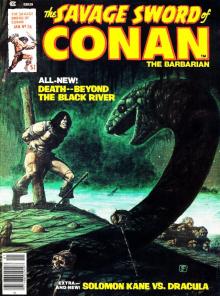 Beyond the Black River
Beyond the Black River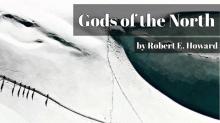 Gods of the North
Gods of the North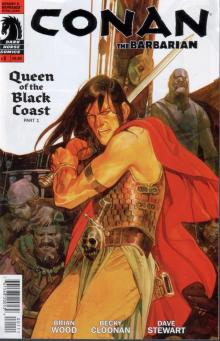 Queen of the Black Coast
Queen of the Black Coast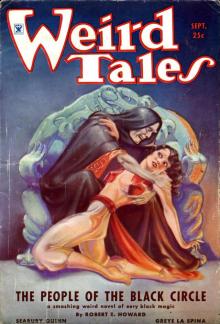 The People of the Black Circle
The People of the Black Circle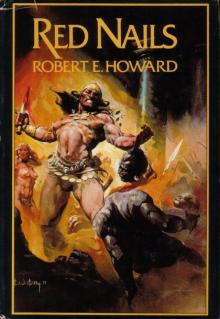 Red Nails
Red Nails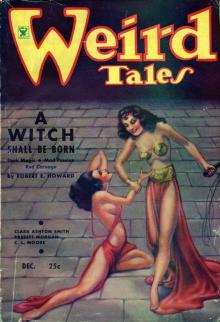 A Witch Shall Be Born
A Witch Shall Be Born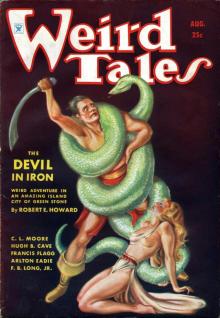 The Devil in Iron
The Devil in Iron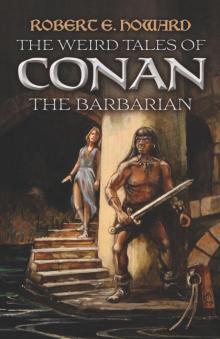 The Weird Tales of Conan the Barbarian
The Weird Tales of Conan the Barbarian The Bloody Crown of Conan
The Bloody Crown of Conan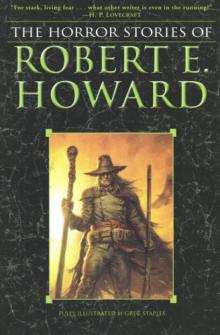 The Horror Stories of Robert E. Howard
The Horror Stories of Robert E. Howard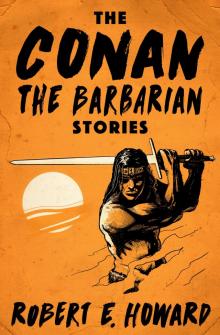 Conan the Conqueror
Conan the Conqueror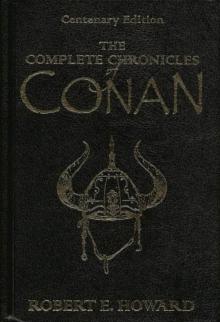 Conan the Barbarian
Conan the Barbarian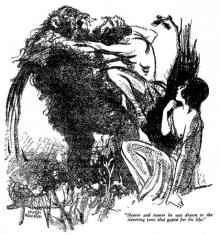 Shadows in the Moonlight
Shadows in the Moonlight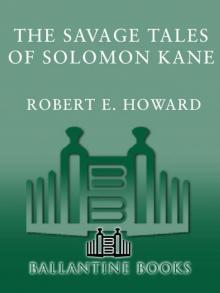 The Savage Tales of Solomon Kane
The Savage Tales of Solomon Kane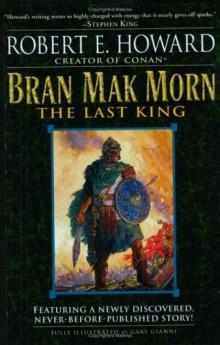 Bran Mak Morn: The Last King
Bran Mak Morn: The Last King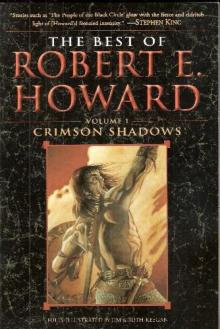 The Best of Robert E. Howard Volume One: Crimson Shadows
The Best of Robert E. Howard Volume One: Crimson Shadows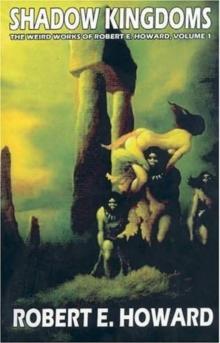 The Best of Robert E. Howard: Crimson Shadows (Volume 1)
The Best of Robert E. Howard: Crimson Shadows (Volume 1)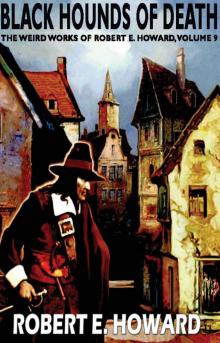 Black Hounds of Death
Black Hounds of Death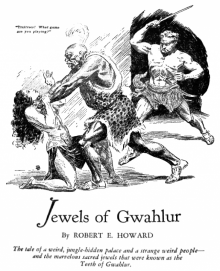 Jewels of Gwahlur
Jewels of Gwahlur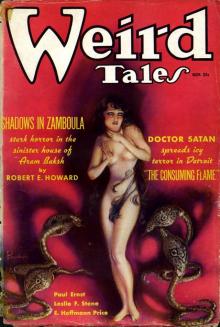 Shadows in Zamboula
Shadows in Zamboula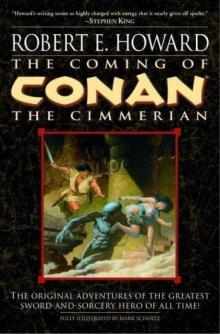 The Coming of Conan the Cimmerian
The Coming of Conan the Cimmerian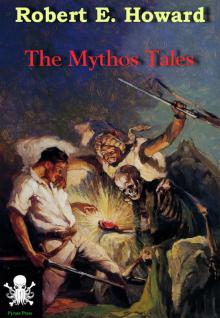 The Mythos Tales
The Mythos Tales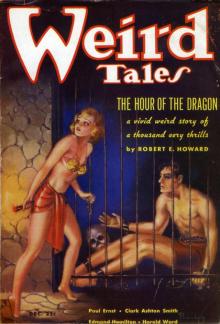 The Hour of the Dragon
The Hour of the Dragon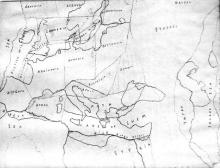 The Hyborian Age
The Hyborian Age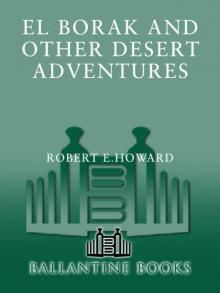 El Borak and Other Desert Adventures
El Borak and Other Desert Adventures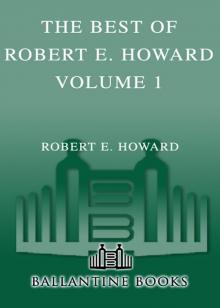 The Best of Robert E. Howard Volume 1 The Best of Robert E. Howard Volume 1
The Best of Robert E. Howard Volume 1 The Best of Robert E. Howard Volume 1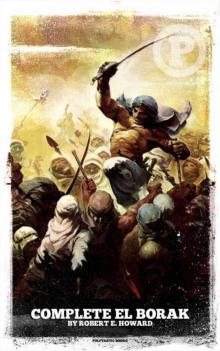 El Borak: The Complete Tales
El Borak: The Complete Tales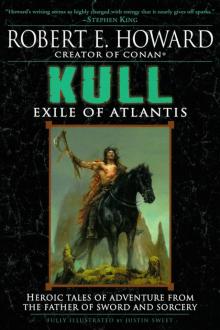 Kull: Exile of Atlantis
Kull: Exile of Atlantis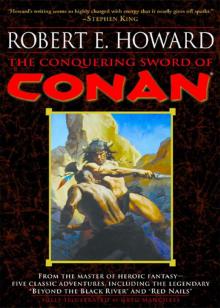 The Conquering Sword of Conan
The Conquering Sword of Conan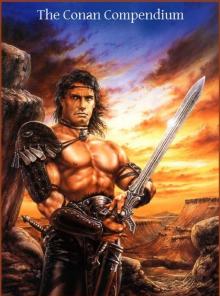 The Conan Compendium
The Conan Compendium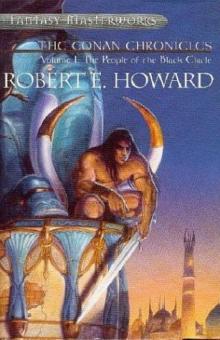 The Conan Chronicles: Volume 1: The People of the Black Circle
The Conan Chronicles: Volume 1: The People of the Black Circle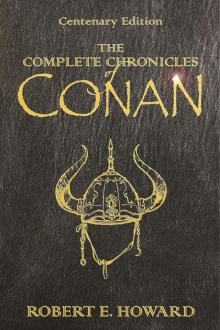 The Complete Chronicles of Conan: Centenary Edition
The Complete Chronicles of Conan: Centenary Edition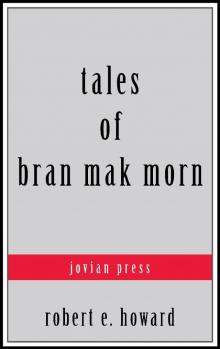 Tales of Bran Mak Morn (Serapis Classics)
Tales of Bran Mak Morn (Serapis Classics)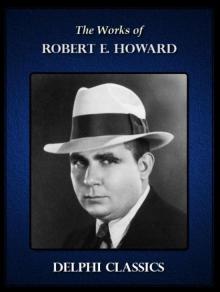 Delphi Works of Robert E. Howard (Illustrated) (Series Four)
Delphi Works of Robert E. Howard (Illustrated) (Series Four)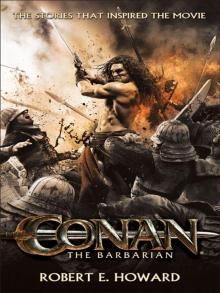 Conan the Barbarian: The Stories That Inspired the Movie
Conan the Barbarian: The Stories That Inspired the Movie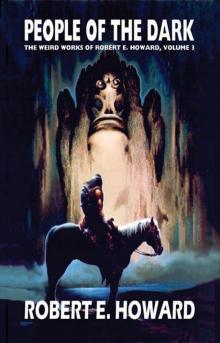 People of the Dark Robert Ervin Howard
People of the Dark Robert Ervin Howard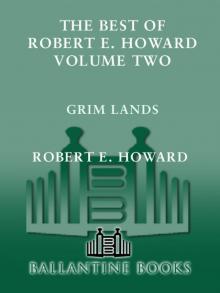 Grim Lands
Grim Lands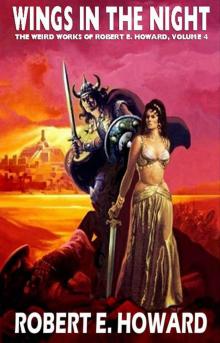 Wings in the Night
Wings in the Night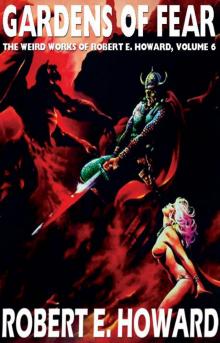 Gardens of Fear
Gardens of Fear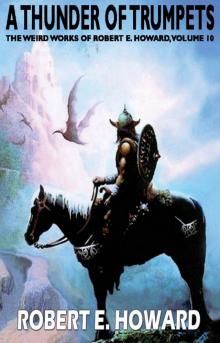 A Thunder of Trumpets
A Thunder of Trumpets Detective of the Occult
Detective of the Occult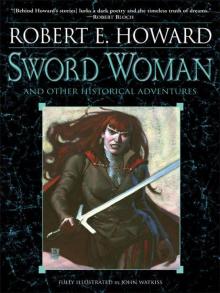 Sword Woman and Other Historical Adventures
Sword Woman and Other Historical Adventures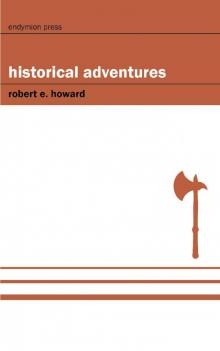 Historical Adventures
Historical Adventures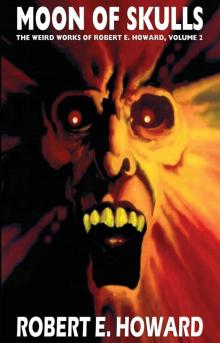 Moon of Skulls
Moon of Skulls The Robert E. Howard Omnibus: 97 Collected Stories
The Robert E. Howard Omnibus: 97 Collected Stories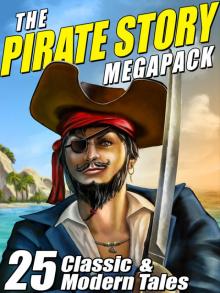 The Pirate Story Megapack: 25 Classic and Modern Tales
The Pirate Story Megapack: 25 Classic and Modern Tales The Best of Robert E. Howard, Volume 2
The Best of Robert E. Howard, Volume 2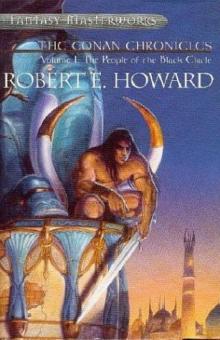 The Conan Chronicles, Vol. 1: The People of the Black Circle
The Conan Chronicles, Vol. 1: The People of the Black Circle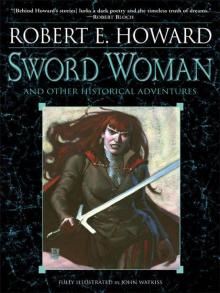 Sword Woman and Other Historical Adventures M
Sword Woman and Other Historical Adventures M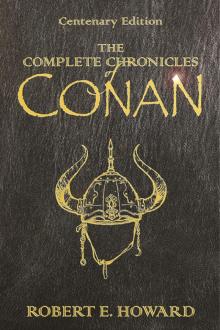 The Complete Chronicles of Conan
The Complete Chronicles of Conan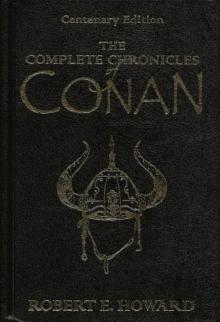 Conan the Barbarian: The Chronicles of Conan (collected short stories)
Conan the Barbarian: The Chronicles of Conan (collected short stories)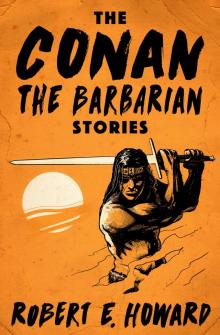 The Conan the Barbarian Stories
The Conan the Barbarian Stories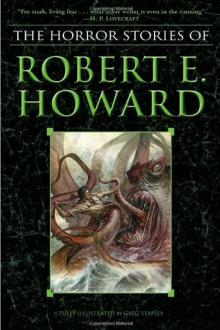 The Best Horror Stories of
The Best Horror Stories of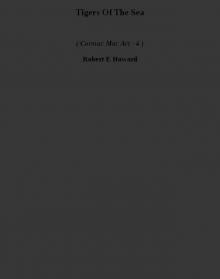 Tigers Of The Sea cma-4
Tigers Of The Sea cma-4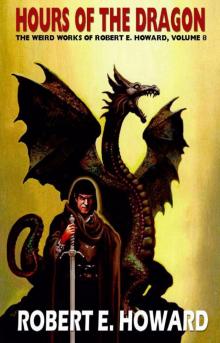 The Hours of the Dragon
The Hours of the Dragon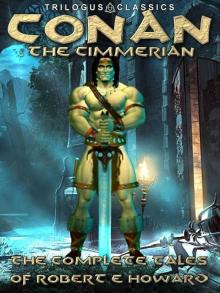 Conan the Cimmerian: The Complete Tales (Trilogus Classics)
Conan the Cimmerian: The Complete Tales (Trilogus Classics)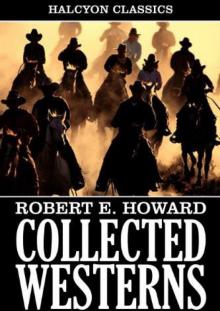 Collected Western Stories of Robert E. Howard (Unexpurgated Edition) (Halcyon Classics)
Collected Western Stories of Robert E. Howard (Unexpurgated Edition) (Halcyon Classics)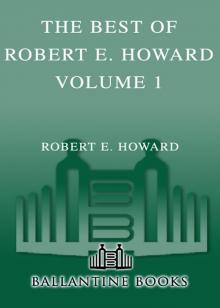 The Best of Robert E. Howard, Volume 1
The Best of Robert E. Howard, Volume 1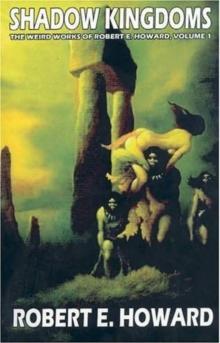 Shadow Kingdoms
Shadow Kingdoms